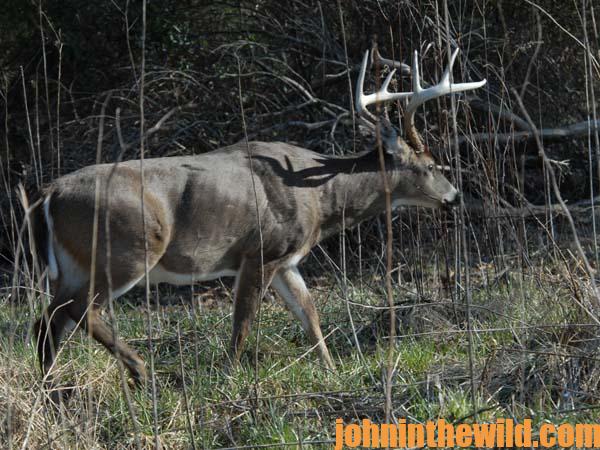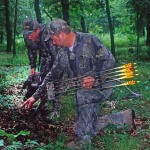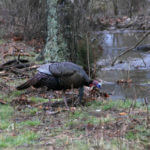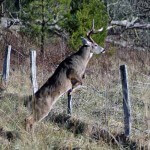John’s Note: When you do everything right on your hunt, why doesn’t a buck show up when you expect him? We all often ask this question, but we rarely get a satisfactory answer. About 90% of the deer harvested each season are taken while moving and feeding. Rarely will a hunter find and take a bedded-down buck. If you know when, why, where and how deer move, you more realistically can predict when the buck should come in to you.
 A study done in northern Michigan named the peek-activity time of whitetails as December and January and then in late March. Ozga and Verone, biologists conducting the study, found that deer moved the most in 4 – 6 hour intervals at sunrise, midday, sunset and twice during the night. As winter continued, the nocturnal-and early-morning feeding movements reduced. Too, the deer moved more during the warmest part of the day. If you hunt in the North in extremely-cold temperatures, consider hunting in the middle of the day when the temperatures warm up, and the deer become more active to have more bucks come to you.
A study done in northern Michigan named the peek-activity time of whitetails as December and January and then in late March. Ozga and Verone, biologists conducting the study, found that deer moved the most in 4 – 6 hour intervals at sunrise, midday, sunset and twice during the night. As winter continued, the nocturnal-and early-morning feeding movements reduced. Too, the deer moved more during the warmest part of the day. If you hunt in the North in extremely-cold temperatures, consider hunting in the middle of the day when the temperatures warm up, and the deer become more active to have more bucks come to you.
When asked how temperature affects deer in the South, Dr. Charles DeYoung, a former wildlife biologist at Texas A&M, explains, “In Texas, where the climate stays warm, and the winters remain mild, deer seem to move during extremely hot weather and very cold weather mainly early in the morning and late in the afternoon.” From this research, a hunter can know that a buck will least likely come in during stable temperatures than when hunting one of the two extreme weather changes in Texas.
Others May Scare Your Deer:
If you go to your stand before daylight, come out for lunch, return to your stand, stay late in the afternoon and still don’t see any deer, plan to sleep in, and hunt the middle of the day. According to Dr. Karl V. Miller, a deer biologist and a wildlife professor at the University of Georgia, “Deer primarily move at twilight and dusk. Sometimes they will move in the middle of the day mainly to avoid hunting pressure.” If you and all your buddies don’t see bucks early and late, let your friends continue to hunt early and late. You hunt when they don’t hunt in the middle of the day. Using this strategy, you’ll see the bucks they never see, and the bucks that haven’t already come into your stand often magically will appear.
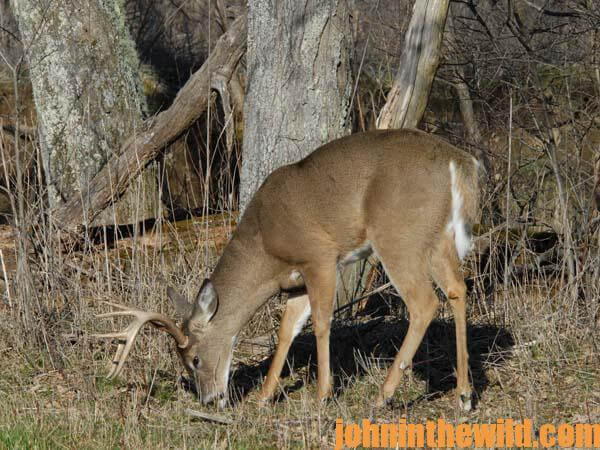 “Especially during the rut in the South, I see more deer from 10:00 am to 2:00 pm than I do at any other time of the day,” says David Hale, one of the founders of Knight and Hale Game Calls
“Especially during the rut in the South, I see more deer from 10:00 am to 2:00 pm than I do at any other time of the day,” says David Hale, one of the founders of Knight and Hale Game Calls
(http://www.knightandhale.com) in Cadiz, Kentucky. “This may occur because the dominant buck does his breeding and chasing at night, and he rests in the early-morning hours when he knows the hunting pressure increases. Then he moves again in the middle of the day after he’s rested, and the hunting pressure has decreased.”
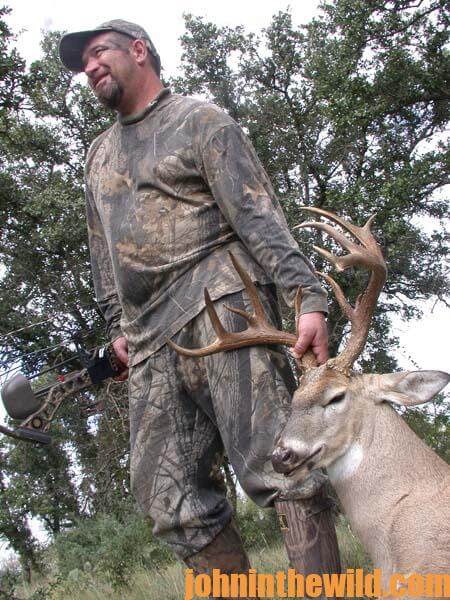 To get John E. Phillips’ Kindle eBooks and print books on hunting deer, “How to Hunt and Take Big Buck Deer on Small Properties,” “How to Hunt Deer Up Close: With Bows, Rifles, Muzzleloaders and Crossbows,” “PhD Whitetails: How to Hunt and Take the Smartest Deer on Any Property,” “How to Take Monster Bucks,” “How to Hunt Deer Like a Pro,” and “Bowhunting Deer: Mossy Oak Pros Know Bucks and Bows,” or to prepare venison, “Deer & Fixings,” click here.
To get John E. Phillips’ Kindle eBooks and print books on hunting deer, “How to Hunt and Take Big Buck Deer on Small Properties,” “How to Hunt Deer Up Close: With Bows, Rifles, Muzzleloaders and Crossbows,” “PhD Whitetails: How to Hunt and Take the Smartest Deer on Any Property,” “How to Take Monster Bucks,” “How to Hunt Deer Like a Pro,” and “Bowhunting Deer: Mossy Oak Pros Know Bucks and Bows,” or to prepare venison, “Deer & Fixings,” click here.
For information on making jerky from your deer to provide a protein-rich snack, you can download a free book from https://johninthewild.com/free-books.



